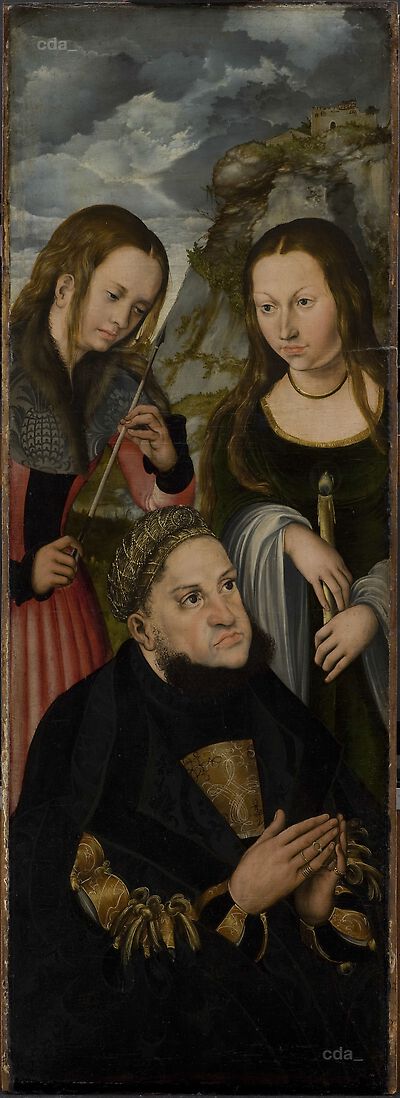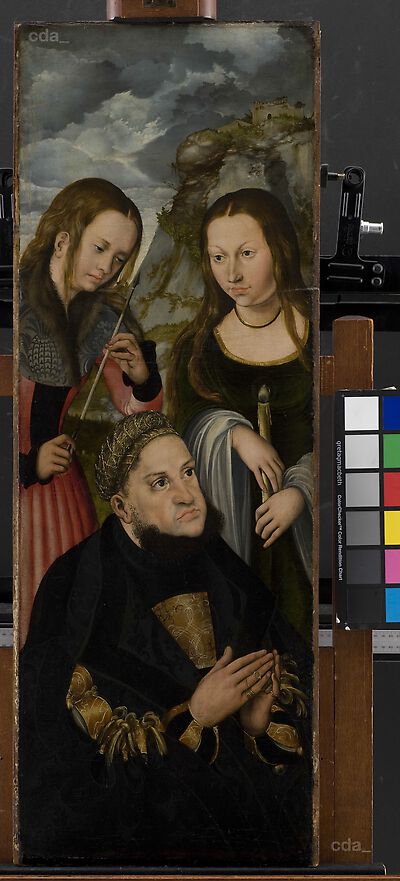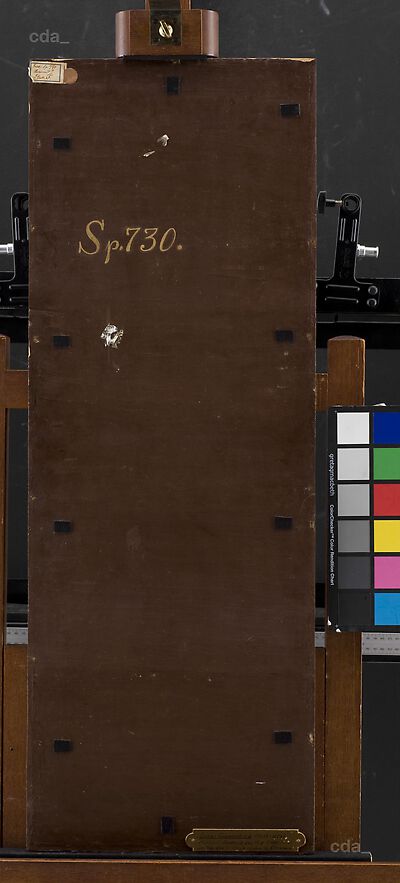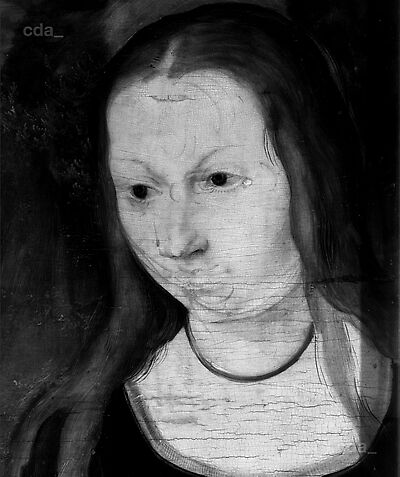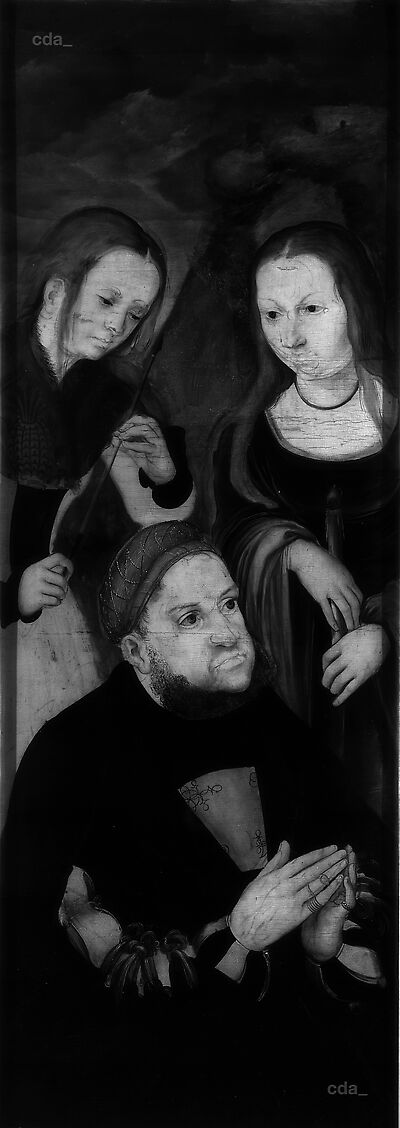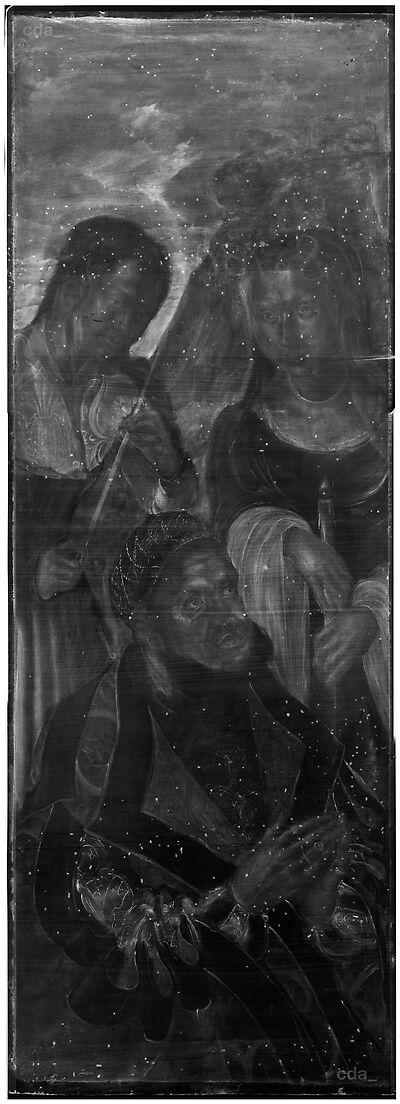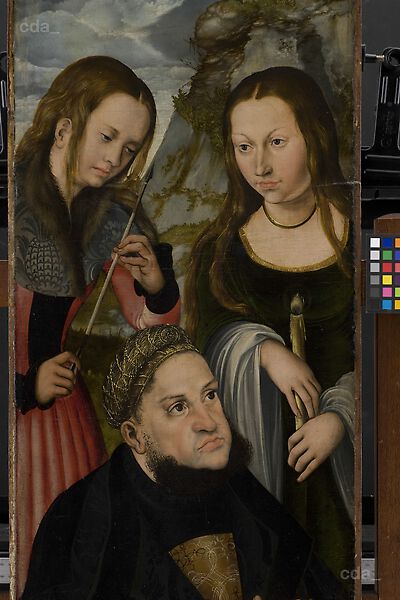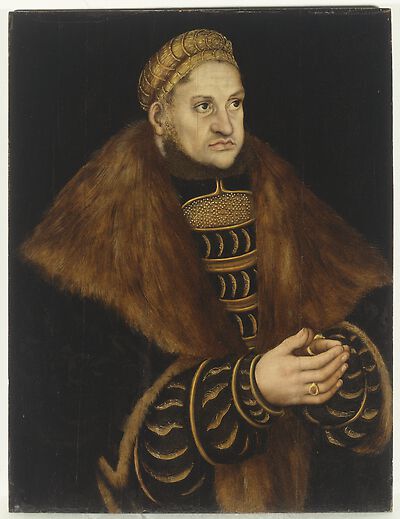The fact that both works [DK_SMK_KMSsp731] may originally have been assembled together as part of an altar has provoked a controversial debate amongst scholars: however disregarding the almost identical format of both panels, which have only been together in the Royal collection in Copenhagen since the 18th century, the difference in scale of the figures, their stylistic variance and the divergent backgrounds argue against their common identity. [1] The central panel exhibits strong links to the somewhat larger so-called Princes‘ Altar in Dessau (about 1510), which was presumably created for the Lady Chapel in the church of the Wittenberg Castle and anticipates the composition of the panel in Copenhagen both stylistically and in the choice of motifs as well as in the evolution of the pictorial type representing a half-length figure of the Virgin and saints. [2] The serenity emanated by the painting in Copenhagen has here yielded to a formal solemnity. [3] The Dessau wing panels also depict Duke Johann the Steadfast of Saxony on the left side wearing the same attire as on the panel in Copenhagen, but against a black background and he is accompanied by St Bartholomew. A similarly clear association was established between the central panel in Copenhagen and a depiction of ‘The Virgin and Child with Sts Catharine, Barbara and Dorothea’ (about 1512-1514) [DE_smbGG-Lost_NONE-001] destroyed [lost] during the war. Here single motifs like the pose and position of the Child, how the ring is placed on the finger and the gesture of St Barbara bare more affinity than the painting in Dessau: [4] the style and format, but above all the landscape background, which being untypical for Cranach suggests the hand of an apprentice, caused scholars to speculate that the panel formerly in Berlin may have been the pendant to the donor panel in Copenhagen. [5] Influences from Netherlandish and Italian sources as well as the example of Albrecht Dürer have been discussed with varying degrees of conviction in relation to the origin of the pictorial type of the Virgin. [6] While the facial type of the Virgin corresponds with the common female physiognomy painted by Cranach between 1500 and 1510, as represented among others by the ‘Venus’ in St Petersburg (1509), [7] a greater similarity between the female heads on the wing panel and the saintly figures on the Catharine Altar in Dresden can be observed. [8]
The correspondence between the altarpieces mentioned and the paintings in Copenhagen not only supply insight into their original context but also demonstrate for Cranach’s early production of altarpieces a characteristic exploitation of an established repertoire of motifs, whose prototypes were taken in part from the artist’s graphic works. [10]
[1] Friedländer, Rosenberg 1979, 76, No. 36; Exhib. Cat. Copenhagen 2002, 91, Nos. 12 and 13; Exhib. Cat. Hamburg 2003, 167, Nos. 4 and 4a.
[2] Flechsig 1900, 85f.; Friedländer, Rosenberg 1979, 72, No. 20; Cat. Dessau 1996, 23-25, No. 7.
[3] Exhib. Cat. Hamburg 2003, 167, No. 4a
[4] Friedländer, Rosenberg 1979, 76, No. 37; Erichsen 1994, 164, Fn. 4; Exhib. Cat. Hamburg 2003, 167, No. 4
[5] Ebenda. A copy of the Berlin painting exists in the Jáchymov (Sankt Joachimsthal), Czech Republic. Erichsen 1994, 157.
[6] Schade 1974, 38-40; Friedländer, Rosenberg 1979, 72, No. 20; Cat. Dessau 1996, 24.
[7] Exhib. Cat. Hamburg 2003, 167, No. 4a.
[8] Friedländer, Rosenberg 1979, 68f., Nos. 12-15 and S. 76, No. 36
[9] Further panels with the Virgin showing the Legend of St Catherine exist in Dessau (1516) [DE_AGGD_10] and Budapest (um 1516-18) [HU_SMB_133]. Friedländer, Rosenberg 1979, 87, Nos. 85 and 85
[10] Erichsen 1994, 156-161
[Carrasco, Exhib. Cat. Gotha, Kassel 2015, 102, 103, Nos. 6, 7]
